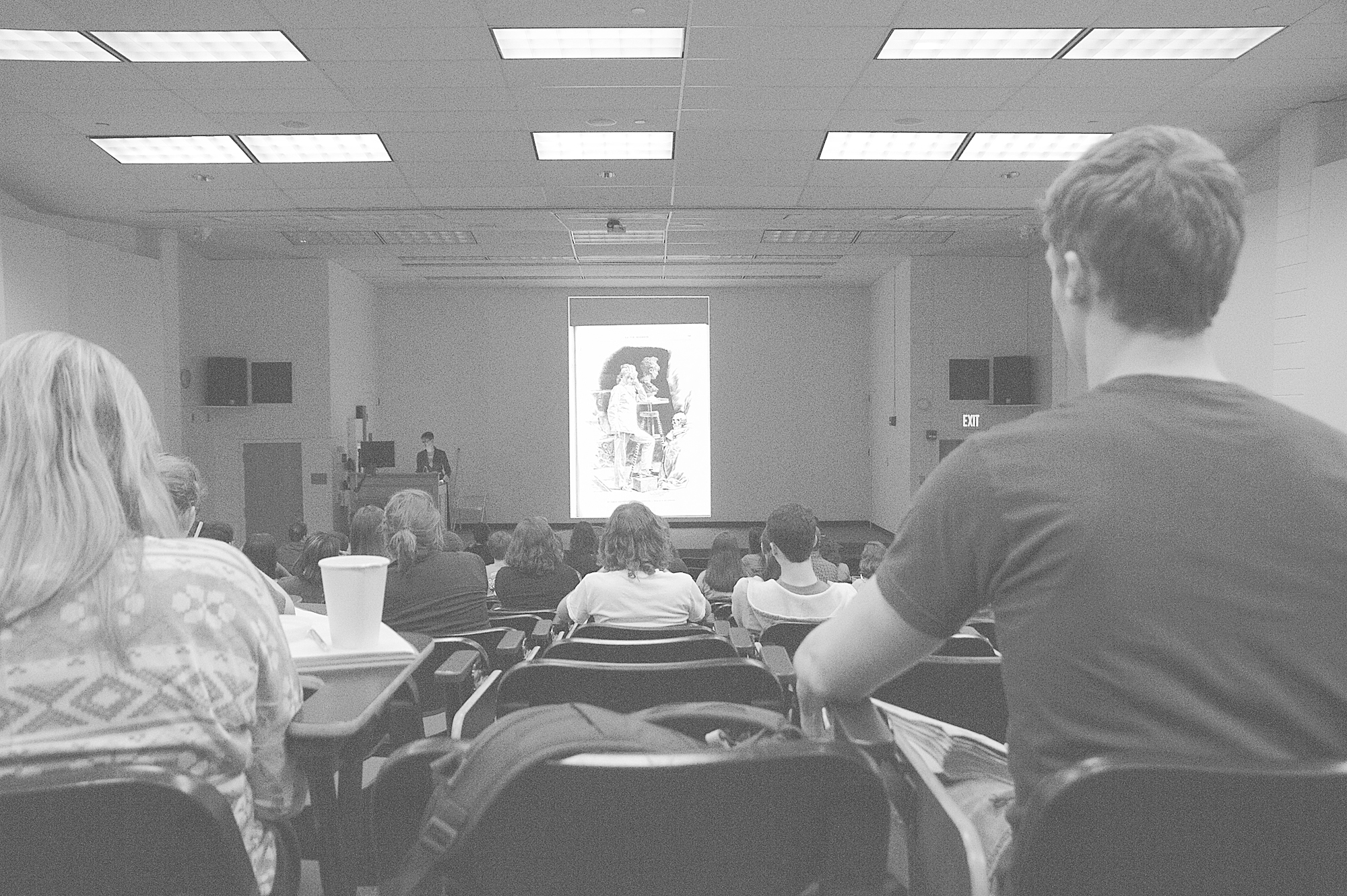“Celebrity is a dirty word in contemporary U.S. culture,” Columbia University Professor Sharon Marcus said to begin her lecture this past Tuesday.
The women’s studies department at the College of William and Mary invited Marcus to come and discuss her research entitled “The Double Life of Female Celebrity” at the 16th Annual Minnie Braithwaite Lecture.
“Like other dirty words — sex, money, Brangelina—we can’t seem to get enough of it, yet have nothing good to say about it. Loved and hated, sought after and scorned, this is one of many ways in which celebrities lead a double life,” Marcus said.
The lecture commemorated both the bravery of Williamsburg resident Minnie Braithwaite’s 1896 petition to attend chemistry lectures and the eventual overall acceptance and integration of women into the College.
“I think it’s important for the women’s studies department to have a major lecture that has as its mission showcasing feminist work every year, and it’s a nice occasion because it brings all of women’s studies together to remember a certain kind of community and [to] have the intellectual stimulation that goes along with it,” English and women’s studies professor Christy Burns said.
After attending the event, many students felt that they gained a greater depth of knowledge and appreciation for the existence of women’s studies as a major at the College.
“I think a lot of people — myself included — don’t think about how Minnie Braithwaite petitioned to take chemistry classes at the College and as a woman was only allowed to take Shakespeare classes,” Emily Barnett ’14 said. “Being a science major, that’s something I take for granted.”
Although she has published articles on various topics, including same-sex domesticity in Victorian England, sentimentality and cosmopolitanism in the writings of Anne Frank and the theory and practice of rape prevention in Hannah Arendt, Marcus decided upon this topic by taking into consideration the importance of celebrities in many students’ lives.
“I think it’s important that a college education involves taking a critical look at popular culture as well as high culture, and the celebrity, in fact, turns out to be what links the two,” Marcus said.
As a teenager, Marcus was greatly interested in the lives of celebrities. However, she was most captivated by the past. She enjoyed watching movies from the 1930s and 1940s, unaware that her favorite pastime would later become a source of inspiration for her academic studies.
“I first started doing research and learned how to use an index because I wanted to see which books talked about movie stars that I was especially interested in, so I feel like I came to this topic more as a fan,” Marcus said.
Marcus’s background not only influenced the direction of her research but also the impact of her subject matter, according to Chantalle Ashford ’14.
“The fact that we have a female professor talking about a female subject that wasn’t strictly about women but that could be lent to all different types of people was really interesting,” Ashford said.
Marcus began her talk by defining a celebrity as someone who is “known by more people than one could ever know.” She focused on the contrasting qualities often held by celebrities through a close reading of an image of Sarah Bernhardt, a Frenchwoman considered to be the most famous woman in the world for approximately 30 years during the late 19th century.
“Bernhardt, in this one image, dissolves binaries of male and female, immortal and mortal, artist and model, subject and object, surface and depth, original and copy,” Marcus said in her lecture.
Even though most of the audience members admitted to never having heard of Bernhardt, many of them were able to draw comparisons to what they know of present-day celebrities, as well as to their own lives.
“I thought it was interesting the way she brought up this 19th-century actress who played with femininity and masculinity and all of these binaries that are supposed to be clear-cut and that even today are hard to break through,” Ashford said.
Marcus blurred the past with the present by directing attention to a celebrity who defied expectations across time periods by presenting herself as both sculptor and sculpture, both modern and classical, and both an imitator and an original. Marcus’s subject matter of the ephemeral celebrity, an image that transcends three centuries, drew the audience back to the original premise of the annual lecture series by comparing the state of gender relations during each century.
“These talks are truly important to show us how far we have come,” Barnett said.

